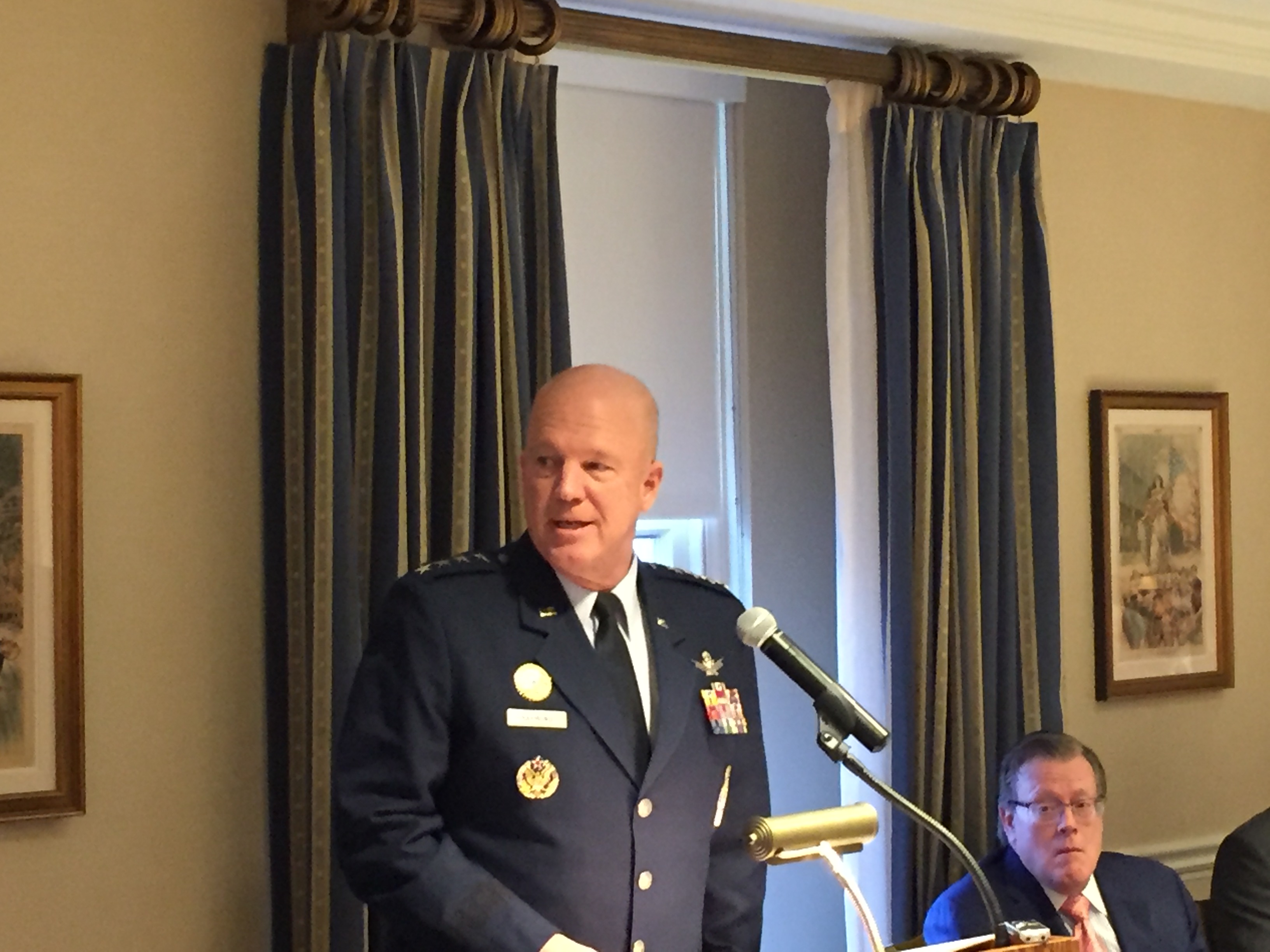
Air Force Space Command boss Gen. Jay Raymond spoke at an AFA Mitchell Institute event on Capitol Hill on Friday. Staff photo by Wilson Brissett.
The 2018 national defense policy bill, which is currently waiting for President Trump’s signature, changes the name of the Operationally Responsive Space program to make it the Space Rapid Capabilities program. The shift is more than “just a name change,” Gen. Jay Raymond, commander of Air Force Space Command, said at an AFA Mitchell Institute event in Washington, D.C., on Friday.
The new name signals “a change in capabilities and capacity to get after what we need to do, and that’s to go fast,” Raymond said.
As the service’s quick space acquisition office, ORS has been around since 2007, but it has specialized in the development of a handful of experimental programs. “The missions and the problems that they were given were sort of on the periphery of important national security space problems,” William LaPlante, senior vice president at MITRE National Security Sector and a former assistant secretary of the Air Force for acquisition, recently told Air Force Magazine.
“They were not very significantly funded,” LaPlante said, and “they did not have the full set of capabilities the [Air Force’s Rapid Capabilities Office] had.” Consequently, “that sort of put them on the back burner.” ORS didn’t have the capacity or capability to handle major Air Force space programs, like the SBIRS missile warning and AEHF communication constellations.
The Space Rapid Capabilities office may be about to change all that. “My goal,” said Raymond, “is to bring ORS capabilities more broadly across Space and Missile Systems Center, and not just use them for little niche capabilities.” How far and how fast the transformation goes remains to be seen, but Raymond is making it clear that the change is more than nominal.